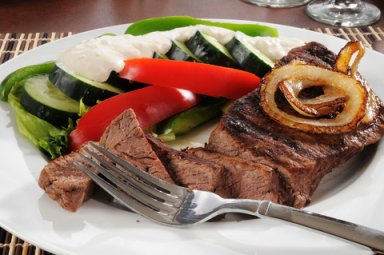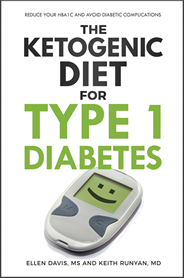Design a Diabetic Meal Plan
A successful diabetic meal plan is one that helps a diabetic patient avoid high blood sugar spikes, so that insulin needs are less, and blood sugar levels stay steady and at or close to normal ranges. Below, I compare the ADA meal recommendations to a ketogenic recommendation and who what each meal does to blood sugar levels.
The Expert Meal Recommendation
Meal plans which don't support the goal of stabilizing and reducing blood sugar and insulin levels should be avoided.
As an example, consider the meal plans suggested by mainstream diabetes educators and organizations such as the American Diabetes Association. In 2018, the guidelines for diabetics in designing a meal put the carbohydrate level of each meal in the 60-75 grams per meal range. So what's wrong with these meal suggestions?
The problem is they are too high in carbohydrate to maintain the blood sugar levels that the American Diabetes Association itself recommends for good health:
- Consider a meal designed with an advisement of about 60-75 grams of carbohydrate. At that single meal carb intake level, studies have shown that the post-prandial (after meal) blood sugar levels would average around 198 mg/dL. The ADA recommends that blood sugar measurements should be less than 170 mg/dl one to two hours after meals. So this meal plan drives blood sugar almost 30 points above the level the ADA recommends.
- In addition, this study demonstrates that recommended foods such as "light yogurt" and potatoes would cause insulin levels to spike unnecessarily high.
- And here's a recent study in which this type of diet is compared to a ketogenic dietary plan in a controlled trial. The people in the intervention group assigned to the ketogenic diet exhibited much better blood sugar control and reduce their HbA1c results, while the ADA-advised group did not.
A Better Diabetic Meal Plan

Meal plans which emphasize fats and proteins do a better job of controlling blood sugar. This is exactly what a ketogenic diet plan offers. An example of a meal which would help a diabetic stabilize and control blood sugar and insulin might be:
- 2 cups of sauteed squash
- 2 tablespoons of butter
- 5 ounces of grilled sirloin steak
- 1 peach for dessert
Total calories for this meal would work out to 610.5 and the caloric ratio of "carbohydrate:protein:fat" would be 16% carbs, 25% protein and 60% fat.
According to the more than 50 studies done on the effects of ketogenic diets on diabetic and non diabetic health, this ratio of fat and protein to carbohydrate intake would keep the blood glucose levels well under 130 mg/dl. And most importantly, ketogenic meals taste better and do a better job of satisfying hunger. These factors which would help the patient stick to the diet, and consistently control blood sugar and insulin to healthy levels.
Diabetic Meal Plan Example for a Day
Here's a full day's menu of examples of diabetic meal plans that can be enjoyed on a ketogenic diet:
Breakfast (427 calories, 71% fat, 22% protein, 4% carb)
- 1 slice of Cheese and Onion Quiche
- Coffee with cream
Lunch (789 calories, 71% fat, 20% protein, 9% carb)
- 1 cup of steamed broccoli with 1 tablespoon butter
- 2 tablespoons of creamy hollandaise sauce
- 8 ounces of herb baked salmon
- 1/2 cup of blueberries with 1 oz cream
Dinner (876 calories, 78% fat, 15% protein, 7% carb)
- 6 ounces Low Carb Meatloaf
- 1 cup steamed cauliflower with 1 tablespoon butter
- 1 cup Low Carb Cole Slaw
Bedtime Snack
Totals: About 2100 calories and 25 carbs.
As you can see from above, a basic diabetic meal plan revolves around a source of fat and protein (meat, chicken, seafood) and non starchy vegetables dressed with fats such as butter and low carb sauces. Desserts are usually lower carb fresh fruits. Personally, I like to make low carb shakes with almond milk and cream, because I can change up the flavors to suit my tastes on any given day.
UPDATE January 2019: Just found out that Tracey Brown, the new CEO of the American Diabetes Association is a type 2 diabetic and is currently reading low-carb expert Dr. Bernstein's book Diabetes Solution. I'm encouraged that progress is underway!
All of my books are available in electronic PDF, and now in paperback on Amazon!
 |
 |
 |
|
Buy paperbook on Buy paperback on Amazon Buy the e-Book via Paypal |
Buy paperback on Buy paperback on Amazon Buy the e-Book via Paypal |
Buy paperback on Buy paperback on Amazon Buy the e-Book via PayPal |